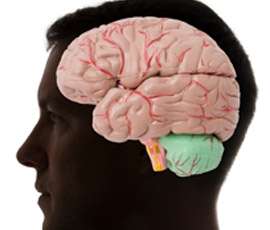Mathematicians help to unlock brain function

(Phys.org) —Mathematicians from Queen Mary, University of London will bring researchers one-step closer to understanding how the structure of the brain relates to its function in two recently published studies.
Publishing in Physical Review Letters the researchers from the Complex Networks group at Queen Mary's School of Mathematical Sciences describe how different areas in the brain can have an association despite a lack of direct interaction.
The team, in collaboration with researchers in Barcelona, Pamplona and Paris, combined two different human brain networks - one that maps all the physical connections among brain areas known as the backbone network, and another that reports the activity of different regions as blood flow changes, known as the functional network. They showed that the presence of symmetrical neurons within the backbone network might be responsible for the synchronised activity of physically distant brain regions.
Lead author Vincenzo Nicosia, said "We don't fully understand how the human brain works. So far the focus has been more on the analysis of the function of single, localised regions. However, there isn't a complete model that brings the whole functionality of the brain together. Hopefully, our research will help neuroscientists to develop a more accurate map of the brain and investigate its functioning beyond single areas."
The research adds to the recent findings published in Proceedings of the National Academy of Sciences in which the QM researchers along with the Department of Psychiatry at University of Cambridge analysed the development of the brain of a small worm called Caenorhabditis elegans. In this paper, the team examined the number of links formed in the brain during the worm's lifespan, and observed an unexpected abrupt change in the pattern of growth, corresponding with the time of egg hatching.
"The research is important as it's the first time that a sharp transition in the growth of a neural network has ever been observed," added Dr Nicosia.
"Although we don't know which biological factors are responsible for the change in the growth pattern, we were able to reproduce the pattern using a simple economical model of synaptic formation. This result can pave the way to a deeper understanding of how neural networks grow in more complex organisms."
Journal information: Physical Review Letters , Proceedings of the National Academy of Sciences
Provided by Queen Mary, University of London



















